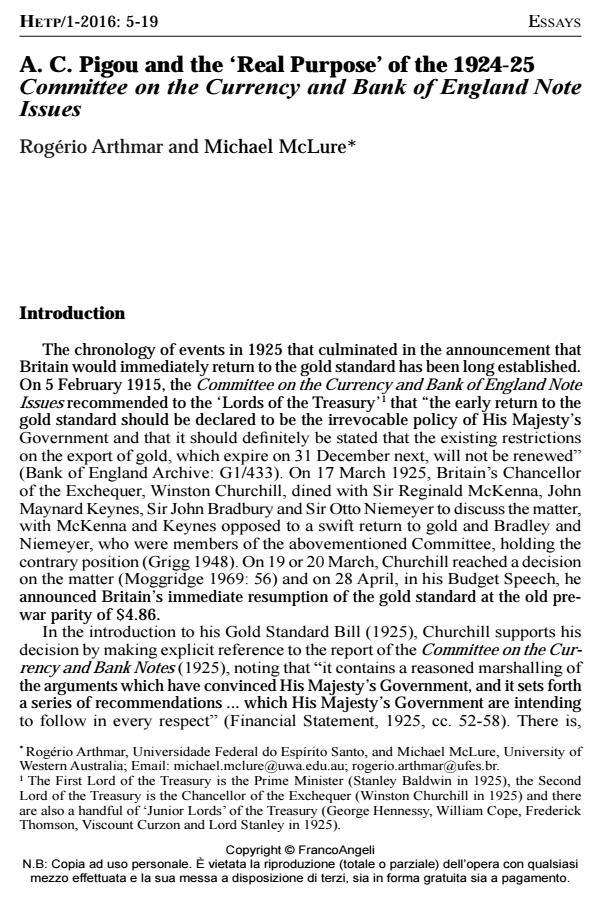A. C. Pigou and the ‘Real Purpose’ of the 1924-25 Committee on the Currency and Bank of England Note Issues
Titolo Rivista HISTORY OF ECONOMIC THOUGHT AND POLICY
Autori/Curatori Rogéro Arthmar, Michael McLure
Anno di pubblicazione 2016 Fascicolo 2016/1
Lingua Inglese Numero pagine 15 P. 5-19 Dimensione file 237 KB
DOI 10.3280/SPE2016-001001
Il DOI è il codice a barre della proprietà intellettuale: per saperne di più
clicca qui
Qui sotto puoi vedere in anteprima la prima pagina di questo articolo.
Se questo articolo ti interessa, lo puoi acquistare (e scaricare in formato pdf) seguendo le facili indicazioni per acquistare il download credit. Acquista Download Credits per scaricare questo Articolo in formato PDF

FrancoAngeli è membro della Publishers International Linking Association, Inc (PILA)associazione indipendente e non profit per facilitare (attraverso i servizi tecnologici implementati da CrossRef.org) l’accesso degli studiosi ai contenuti digitali nelle pubblicazioni professionali e scientifiche
Brian Reddaway has argued that the title for the Committee on the Currency and Bank Notes served as a smokescreen to hide its real purpose of advising the government on Britain’s return to gold. When A. C. Pigou was invited by Sir Otto Niemeyer to serve on that Committee, there was no mention of gold. Only the title of the Committee was mentioned in the letter. The objective of this study is to establish whether Pigou appreciated the real purpose of the Committee or whether he was misled by the title of the Committee that he was invited to serve on.
Parole chiave:Bank Notes, Currency Notes, Gold Standard, Pigou
Jel codes:B13, E52
- Pigou on War Finance and Welfare Rogério Arthmar, Michael McLure, in History of Economics Review /2017 pp.2
DOI: 10.1080/10370196.2016.1270159
Rogéro Arthmar, Michael McLure, A. C. Pigou and the ‘Real Purpose’ of the 1924-25 Committee on the Currency and Bank of England Note Issues in "HISTORY OF ECONOMIC THOUGHT AND POLICY" 1/2016, pp 5-19, DOI: 10.3280/SPE2016-001001